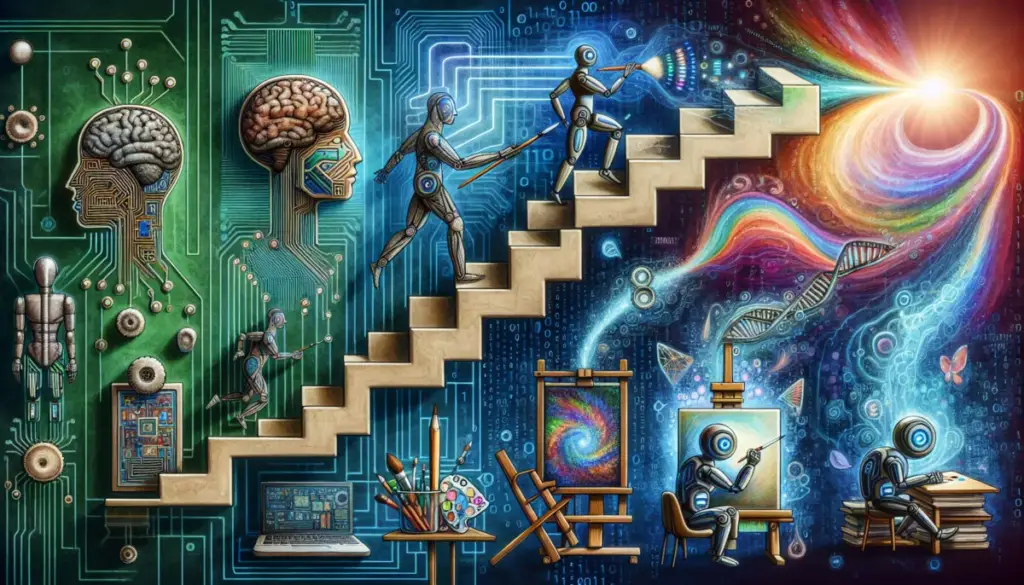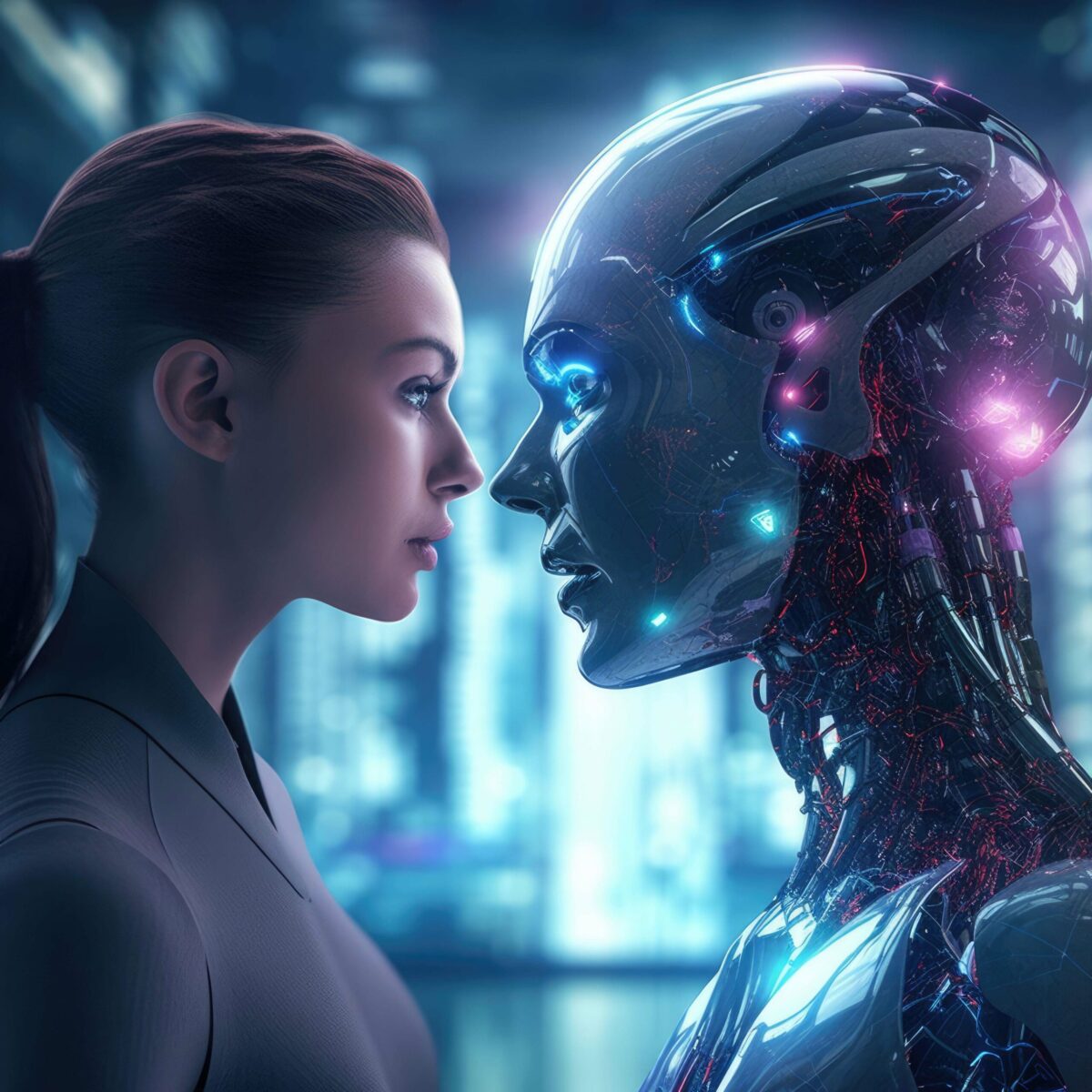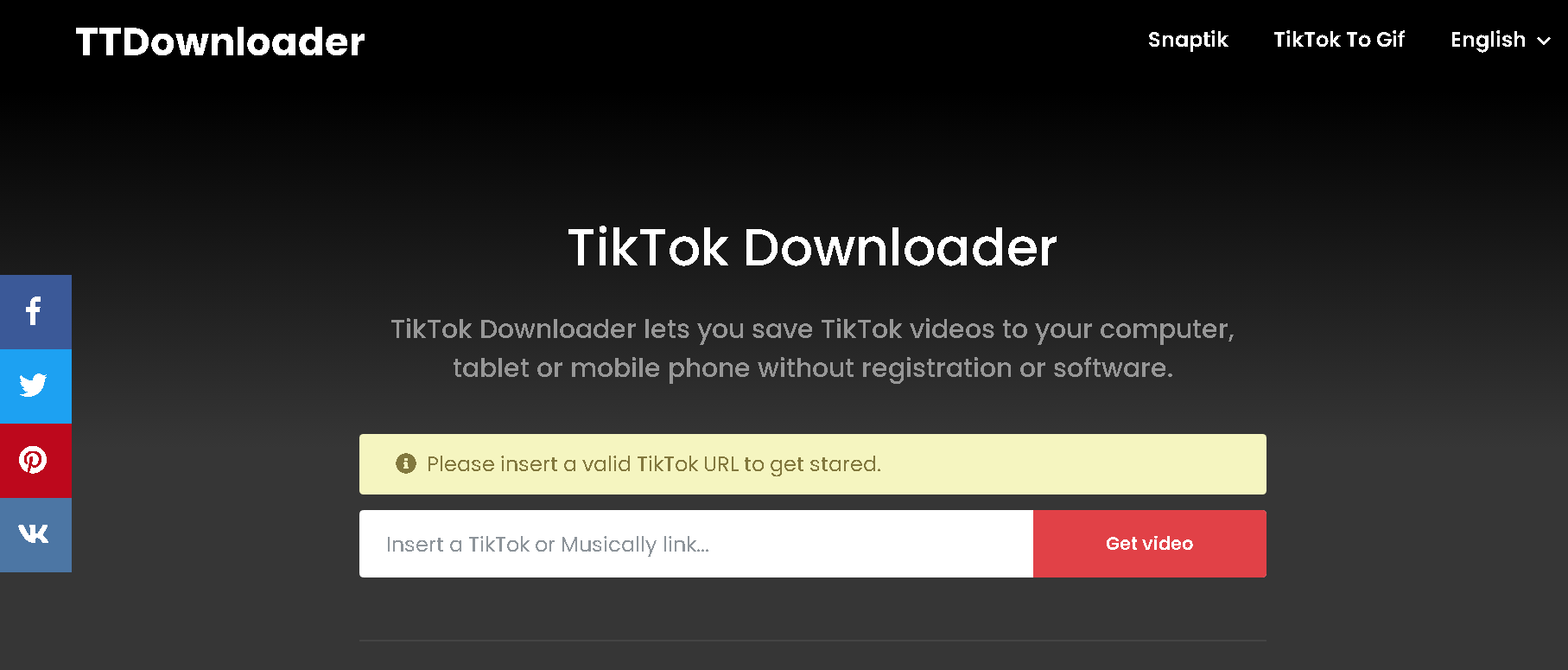Artificial Intelligence (AI) has quickly developed from a specialized area of technology to a disruptive force affecting almost all industries. The creative business is one of the areas going through the biggest shifts. AI has a significant and wide-ranging impact on creativity, influencing everything from creating art to writing music. We will examine how AI is changing writing, music, design, and other creative professions in this in-depth investigation, looking at both the potential advantages and difficulties it poses.

1. Understanding AI in the Creative Industry
AI refers to systems and technologies designed to simulate human intelligence and perform tasks such as learning, problem-solving, and decision-making. In the creative industry, AI encompasses various technologies, including:
- Machine Learning (ML): Algorithms that enable systems to learn and improve from experience without being explicitly programmed.
- Natural Language Processing (NLP): AI technology that enables machines to understand and generate human language.
- Computer Vision: Techniques that allow computers to interpret and understand visual information from the world.
- Generative Adversarial Networks (GANs): A type of neural network used to generate new data that resembles existing data, often used in art and design.
These technologies are being leveraged to create innovative solutions, streamline workflows, and even redefine the boundaries of creativity.
2. AI in Art and Design
2.1. Generating Art
AI’s ability to create visual art has been one of the most talked-about developments. Tools like DeepArt, Artbreeder, and DALL-E use advanced algorithms to generate unique artworks based on input parameters or existing styles.
- Artbreeder: A platform that allows users to blend and evolve images using GANs. It offers an interactive way to create new artworks by combining different styles and elements.
- DALL-E: Developed by OpenAI, DALL-E generates images from textual descriptions, creating visuals that might never have existed otherwise. For instance, it can produce a picture of “an armchair in the shape of an avocado,” blending creativity and AI capabilities.
Impact: AI-generated art challenges traditional notions of creativity and authorship. It allows artists to explore new styles, generate inspiration, and even produce pieces autonomously. However, it also raises questions about the originality of AI-created works and the role of human input in the creative process.
2.2. Enhancing Design Processes
AI tools are revolutionizing design by offering new ways to enhance creativity and efficiency.
- Adobe Sensei: Adobe’s AI technology integrates with its creative suite, offering features like automatic image tagging, content-aware fill, and enhanced editing tools. These capabilities streamline the design process and allow designers to focus more on creative aspects.
- Runway ML: Provides designers with easy access to machine learning models that can be used for tasks such as generating visuals, manipulating images, and creating animations.
Impact: AI tools accelerate design workflows, reduce repetitive tasks, and enable designers to experiment with new techniques. They democratize design by making advanced tools accessible to non-experts, expanding creative possibilities.
3. AI in Music Composition
3.1. Composing Music
AI’s role in music composition is both innovative and intriguing. Platforms like Aiva, Amper Music, and OpenAI’s MuseNet demonstrate how AI can generate music across various genres and styles.
- Aiva: An AI composer that creates original music pieces based on user input, such as mood, style, or genre. It has been used to compose background music for films, games, and other media.
- Amper Music: A user-friendly platform that allows users to create custom music tracks by adjusting parameters such as tempo, mood, and instrumentation.
Impact: AI-generated music offers new possibilities for composers and musicians, providing tools to generate ideas, assist in composition, and create background music quickly. However, it also raises questions about the uniqueness of AI-generated compositions and the potential for homogenized music.
3.2. Enhancing Music Production
AI is also transforming music production by offering tools for mixing, mastering, and sound design.
- LANDR: An AI-powered platform that provides automated mastering services, allowing musicians to polish their tracks with minimal effort.
- iZotope Ozone: Incorporates AI-driven features for mastering, helping producers enhance sound quality and achieve professional results.
Impact: AI tools streamline the music production process, making high-quality production more accessible to independent artists and small studios. They also offer innovative ways to explore sound and improve audio quality.

4. AI in Writing and Content Creation
4.1. Generating Written Content
AI’s impact on writing is evident in tools like GPT-3, Jasper, and Copy.ai, which can generate coherent and contextually relevant text based on user input.
- GPT-3: Developed by OpenAI, GPT-3 is a language model capable of generating human-like text, from articles and stories to technical documentation.
- Jasper (formerly Jarvis): A content generation tool that helps marketers and writers produce engaging copy quickly, using AI to suggest content ideas and create text.
Impact: AI writing tools assist with content creation, streamline the writing process, and generate ideas. They are particularly useful for tasks like drafting, brainstorming, and producing routine content. However, concerns arise about the authenticity of AI-generated content and the potential for over-reliance on automated writing.
4.2. Enhancing Creativity
AI tools can also support creativity by providing writing prompts, generating ideas, and aiding in the revision process.
- Grammarly: While primarily a grammar-checking tool, Grammarly’s AI features also offer suggestions for improving style and clarity, aiding writers in refining their work.
- ShortlyAI: Assists writers by generating text based on prompts and extending content, helping overcome writer’s block and enhance productivity.
Impact: These tools enhance writers’ creativity by providing new perspectives and suggestions. They also help streamline the revision process, making it easier to produce polished, high-quality content.
5. AI in Film and Animation
5.1. Creating Visual Effects
AI is revolutionizing visual effects (VFX) in film and animation, offering tools for generating realistic effects, enhancing visuals, and automating complex tasks.
- Deepfake Technology: Uses AI to create realistic but fake video content by superimposing faces or altering expressions. This technology can be used creatively in film and entertainment but also raises ethical concerns.
- Runway ML: Provides VFX tools that allow filmmakers to create and manipulate visual effects using AI, simplifying complex tasks like object removal and style transfer.
Impact: AI enhances the visual storytelling experience, allowing filmmakers to achieve sophisticated effects and streamline production processes. However, it also introduces challenges related to authenticity and ethical considerations.
5.2. Automating Animation
AI is also being used to automate aspects of animation, such as character movement and scene transitions.
- EbSynth: A tool that uses AI to apply artistic styles to video frames, creating animations that maintain a consistent artistic vision.
- Deep Dream Generator: Applies neural network algorithms to create dream-like visual effects in animations, offering new artistic possibilities.
Impact: AI tools in animation enable creators to experiment with new styles and techniques, automate repetitive tasks, and accelerate production timelines. They also offer innovative ways to enhance visual storytelling.
6. Ethical Considerations and Challenges
6.1. Authenticity and Originality
One of the most significant debates surrounding AI in the creative industry is the question of authenticity and originality. When AI generates art, music, or text, it raises questions about the role of human creativity and the value of AI-produced works.
Considerations:
- Creatorship: Who is the true creator of AI-generated works? Is it the AI, the developer, or the user who provided the input?
- Value: How do we value AI-generated works compared to human-created art? Does the presence of AI diminish the significance of the creative process?
6.2. Job Displacement
AI’s capabilities also raise concerns about job displacement in the creative industry. As AI tools become more advanced, there is fear that they may replace human jobs in fields such as design, writing, and music composition.
Considerations:
- Skill Shifts: While AI may automate some tasks, it can also create new opportunities and demand for skills related to managing and working with AI tools.
- Collaboration: AI is more likely to complement human creativity rather than replace it, leading to new forms of collaboration between humans and machines.
6.3. Bias and Ethical Use
AI systems are only as unbiased as the data they are trained on, and there is a risk of perpetuating existing biases in creative works.
Considerations:
- Data Bias: AI algorithms can inadvertently reinforce stereotypes and biases present in the training data, affecting the diversity and inclusivity of creative content.
- Ethical Use: The ethical use of AI in creating deepfakes and manipulating media content raises concerns about misinformation and misuse.
7. Future Prospects
As AI continues to evolve, its impact on the creative industry is likely to expand and deepen. The future will likely see increased collaboration between humans and AI, leading to new forms of creativity and innovation.
7.1. Enhanced Creativity
AI tools will continue to enhance human creativity by offering new ways to explore ideas, generate content, and streamline creative processes. The combination of human intuition and AI capabilities promises exciting possibilities for artistic expression.
7.2. New Art Forms
AI may lead to the creation of entirely new art forms and genres, blending technology and creativity in novel ways. The intersection of AI and art will continue to push boundaries and challenge traditional notions of creativity.
7.3. Ethical Frameworks
The development of ethical frameworks and guidelines will be crucial in addressing the challenges associated with AI in the creative industry. Ensuring that AI is used responsibly and transparently will be essential for fostering a positive and inclusive creative environment.

Conclusion
The impact of artificial intelligence on the creative industry is both profound and transformative. From generating art and composing music to enhancing design and automating animation, AI is reshaping how creativity is expressed and experienced. While AI offers numerous benefits, such as increased efficiency and new creative possibilities, it also presents challenges related to authenticity, job displacement, and ethical considerations.
As we navigate this evolving landscape, it is essential to embrace the opportunities AI presents while addressing the challenges and ensuring that its use is ethical and responsible. By doing so, we can harness the power of AI to enrich the creative industry and inspire new forms of artistic expression. Tech-arcis



